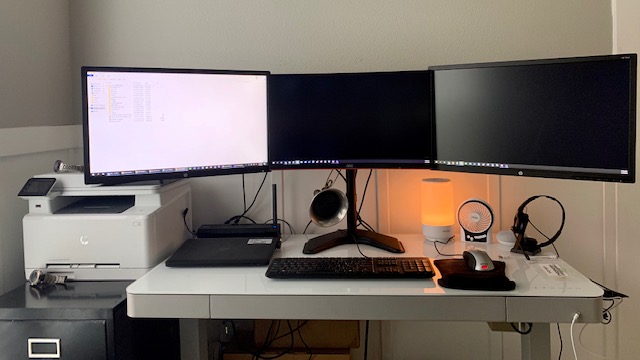|
Human Environmentalist
Join Date: Aug 2010
Location: Oregon
Posts: 13,041
Thanks: 4,378
Thanked 4,557 Times in 3,503 Posts
|
True, I work 95% from home and miss social interaction and find it difficult to collaborate on something because people can ignore IMs and emails, but cannot ignore someone standing in a cubicle. It's also not healthy to wear lounge clothes while working since there's something about that routine that prepares one to work.
I'm not more productive from home, but one podcast said on average people are 30% more productive working from home. They talked about 5 levels of distributed work:
Quote:
The Five Levels of Distributed Teams
Level 1: Non-Deliberate Action
Nothing deliberate has been done by the company to support remote work, but employees can still keep the ball rolling somewhat if they’re at home for a day.
They have access to their smartphone, and email. Perhaps they dial in to a few meetings.
But they’ll put off most things until they’re back in the office, and will be a shadow of their office-bound selves.
Level 1 is where the overwhelming majority of organisations were prior to the COVID19 outbreak.
Level 2: Recreating the Office Online
This is where most organisations now reside — especially traditional ones.
It’s where your employees have access to videoconferencing software (eg. Zoom), instant messaging software (eg. Slack) and email, but instead of redesigning work to take advantage of the new medium, teams ultimately end up recreating online, how they work in the office.
This extends to many of the bad habits that permeate the modern office and suppress the ability of knowledge workers to actually think — here’s looking at you 10-person video-calls when two people would suffice, 60+ interruptions a day — now via Slack and phone calls, the sporadic checking of and responding to email more than 70 times a day throughout the day, or the hyper-responsiveness that is expected of all employees, leaving them wired to desktop dings like Pavlov’s dog.
At Level 2, people are still expected to be online from 9 to 5, and in some cases to be subject to what essentially amounts to spyware, with employers installing screen-logging software, such as RescueTime, on their employee machines so that they can play the role of Big Brother (see the Dictator’s Guide below for more like this).
Level 3: Adapting to the medium
At level 3, organisations start to adapt to and take advantage of the medium. Mullenweg points to shared documents (such as a Google Doc), that is visible to all and updated in real-time during a discussion, so that there is a shared understanding of what is discussed and decided, eliminating the risk of lost in translation errors and time wasted thereafter.
It’s at this stage that companies start to invest in better equipment for their employees as well, such as lighting for video-calls and background noise-canceling microphones.
Effective written communication becomes critical the more companies embrace remote work. With an aversion to ‘jumping on calls’ at a whim, and a preference for asynchronous communication
Level 4: Asynchronous Communication
‘I’ll get to it when it suits me.’ This is the nature of asynchronous communication.
The reality is that most things don’t require an immediate response. For most things, a one-way email or instant message should do the job, with the recipient responding when it suits them.
If something really is urgent, then the mode of communication should reflect that. Pick up the phone, or tap that person on the shoulder, but only if it is truly urgent.
Aside from the obvious and massive benefit of giving knowledge workers time to think, create and get into the flow state (a psychological state whereby we are up to five times more productive according to McKinsey), but asynchronous communication predisposes people to making better decisions.
As Robert Greene says, if you want to cut emotion out of the equation, increase your response time. Giving people time to think between question and response, rather than fall victim to blurting out the first thing that comes to mind in a meeting or when tapped on the shoulders, delivers a compound benefit to the organisation over time.
In order to avoid tennis games and duplication of effort, ensure that asynchronous messages:
provide sufficient background detail, where necessary provide clear action item(s) and outcome(s) required.
provide a due date
provide a path of recourse if the recipient is unable to meet your requirements.
Level 5: ‘Nirvana’
This is where your distributed team works better than any in-person team ever could. Mullenweg equates this level with having more emphasis on ‘environment design’, insofar as the organisation’s culture, and the physical environment people work in is concerned.
|
I'd say my company is somewhere between level 2 and 3. I do have a sweet headset, an electric standing desk (standing now), printer/scanner, and 3 displays.

Last edited by redpoint5; 04-02-2020 at 10:31 PM..
|